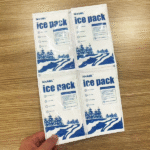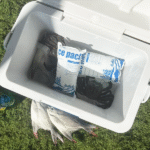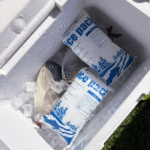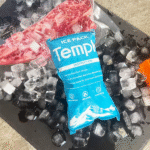How Do Cold Chain Technology Services Optimize Logistics in 2025?
Cold chain technology services describe the digital tools, sensors and platforms that keep temperature sensitive goods safe from production to delivery. These services matter because in 2025 the global cold chain logistics market is worth about US$436 billion and is expected to surpass US$1.359 trillion by 2034. Al mismo tiempo, the rising demand for biologics, vaccines and plant based foods means more perishable products travel further and must stay within tight temperature ranges. Cold chain technology services combine Monitoreo de IoT, análisis predictivo y sustainable equipment to cut spoilage, reduce energy use and keep you compliant with increasingly strict regulations. In this guide you’ll learn how these services work and how they can help your business.
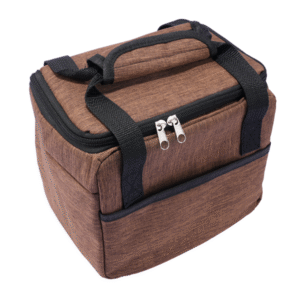
What are cold chain technology services and why do they matter? Learn how IoT sensors, cloud platforms and predictive analytics protect sensitive goods and why the market is growing rapidly.
How do predictive analytics and AI improve cold chain operations? Discover how machine learning models reduce downtime by up to 50 % and cut energy consumption 10–30 %.
What monitoring tools and visibility solutions are available in 2025? Comparar registradores de datos, wireless sensors, RFID tags and GPS trackers, and see which device makes sense for your operation.
How is sustainability shaping cold chain technology services? Find out why energy efficient reefers, low GWP refrigerants and renewable power sources are critical to both compliance and cost reduction.
What trends will shape the cold chain technology landscape through 2025 y más allá? Learn about automation, standardized data, growth in plant based foods and pharmaceuticals, and how to prepare your business for the future.
What are cold chain technology services and why do they matter?
Cold chain technology services are integrated solutions—typically delivered by logistics providers, equipment manufacturers or software companies—that monitor and manage temperature controlled shipments. They encompass sensors, communication networks, analytics platforms and compliance tools. These services ensure that goods maintain required temperatures, humidity levels and environmental conditions throughout production, almacenamiento, transporte y distribucion. The goal is simple: evitar el deterioro, contamination and regulatory non compliance.
Respuesta directa: safeguarding quality and compliance
Cold chain technology services matter because even minor temperature excursions can ruin perishable goods. Sensors and IoT devices record temperature, humedad, location and vibration data and send real time alerts when conditions drift. Predictive analytics platforms analyse patterns to forecast equipment failures and optimize routes. Without these services, arriba a 20 % of temperature sensitive products spoil durante el tránsito, leading to financial losses and potential health risks. Regulatory bodies such as the FDA, WHO and EU Good Distribution Practices require documented temperature control; technology services automate monitoring and record keeping to ensure compliance.
Background and expanded explanation
From the dairy industry to pharmaceutical distribution, temperature control is non negotiable. Traditional paper logs and manual checks are inadequate for today’s complex supply chains. Cold chain monitoring solutions use sensors, registradores de datos, GPS trackers and cloud based platforms to provide real time or recorded temperature data. By automating alerts and documentation, these services enable immediate corrective action, reducing waste and ensuring product safety. Advanced systems even integrate IA y análisis predictivo to predict failures before they occur. The global cold chain monitoring market shows strong growth: one estimate valued it at US$5.3 billion in 2022, ascendido a 10.200 millones de dólares por 2026 en un 16.6 % Tocón, while another research firm put the market at 35.030 millones de dólares en 2024 con un proyectado 23 % CAGR de 2025 a 2030. These figures, though differing, illustrate the rapid adoption of digital cold chain solutions, driven by tighter regulations and increased globalization.
Core components of digital cold chain services
Cold chain technology services are built on a range of hardware and software components. Understanding these building blocks helps you choose the right solution.
| Componente | Función | Relevance to You |
| Temperatura & registradores de datos de humedad | Compact devices that record temperature and humidity over time; provide historical records via USB, NFC o Bluetooth | Affordable and reliable for audit trails, but data is accessed only after transit; best for shipments where real time intervention isn’t critical |
| Sensores inalámbricos basados en IoT | Devices installed in storage units or vehicles that transmit real time temperature and humidity data via Wi Fi, celular o LoRaWAN | Allow continuous monitoring and automated alerts; support predictive maintenance but require connectivity and power |
| RFID temperature sensors | Tags with built in temperature sensors read by RFID scanners; enable automatic, contactless data collection in warehouses | Ideal for large warehouses; reduce human error but need strategic reader placement and may be affected by metal or liquids |
| GPS based trackers | Combine location tracking with temperature monitoring to provide real time visibility into shipment location and condition | Enhance security and route optimization; critical for high value cargo or long distance shipments |
| Predictive analytics platforms | Software that analyzes sensor data to predict equipment failures, optimize routes and forecast demand | Reduce unplanned downtime by up to 50 %, lower repair costs by 10–20 % and cut energy use by 10–30 % |
Consejos y consejos prácticos
Map your facility’s temperature profiles: Conduct temperature mapping tests to identify hot and cold spots in storage areas. A California dairy processor reduced spoilage by 18 % y salvado US$120,000 per year after switching to hybrid packaging and adjusting airflow based on temperature mapping.
Use the FIFO (primero en, primero en salir) método: Sell or ship older stock first to minimize spoilage and ensure product rotation.
Plan for emergencies: Implement contingency plans for power failures or vehicle breakdowns, including backup generators and alternative transportation.
Automate compliance documentation: Use digital loggers and cloud platforms to maintain records for audits and certifications. This saves time and reduces human error.
Leverage hybrid packaging: Combine active refrigeration with passive phase change materials (PCM) to maintain temperatures during delays.
Caso del mundo real: A global pharmaceutical distributor installed IoT sensors in its freezer warehouses and used predictive analytics to monitor compressor performance. Más de seis meses, the system detected anomalies early, allowing technicians to repair units before failure. The company reduced unplanned downtime by 45 % y cut energy consumption by 15 %, demonstrating how proactive monitoring translates into tangible savings.
How do predictive analytics and AI improve cold chain operations?
Predictive analytics and AI transform cold chain management from a reactive process into a proactive strategy. By analyzing real time data from sensors and historical records, algorithms can detect patterns that precede equipment failures, forecast demand and optimize routes.
Respuesta directa: anticipating problems before they happen
Predictive analytics uses machine learning models to identify anomalies in refrigeration systems, route delays and inventory patterns. These algorithms alert operators when a compressor consumes more energy than normal or when a shipment is likely to arrive late. Reduced downtime and costs are tangible benefits: predictive maintenance can reduce unplanned equipment downtime by arriba a 50 % and lower repair costs by 10–20 %. Because refrigeration accounts for roughly 70 % of energy consumption in cold storage facilities, identifying inefficiencies can cut energy use by 10–30 %. Such savings quickly offset the cost of sensors and analytics platforms.
Explicación expandida: AI’s broader role in the cold chain
Beyond maintenance, AI algorithms analyze historical data to forecast demand, optimize inventory levels and design efficient routes. Combined with real time traffic and weather data, AI reroutes vehicles to avoid delays and minimize emissions. The adoption of robotics and automation further reduces labour costs and human error. Studies cited by Trackonomy highlight that aproximadamente 80 % of warehouses are not automated, signalling significant potential for growth. Automation and AI help maintain consistent temperatures, accelerate order fulfilment and improve worker safety. En el sector farmacéutico, dónde acerca de 20 % of new drugs are gene or cell therapies requiring ultra cold storage, AI can forecast demand surges and allocate capacity accordingly.
Machine learning for predictive maintenance
Predictive maintenance algorithms monitor sensor data and flag deviations that could indicate compressor wear, refrigerant leakage or insulation failure. Por ejemplo, if a refrigeration unit normally draws 5 kW but suddenly requires 20 % more energy, the algorithm triggers a maintenance ticket. Technicians can schedule service before a breakdown, avoiding product losses and emergency repairs. IoT based analytics not only reduce downtime but also cut energy consumption by 10–30 %. When combined with dynamic route planning, predictive systems balance delivery schedules with energy efficiency, ensuring goods arrive on time while minimizing fuel use.
| AI use case | Cómo funciona | Beneficio para ti |
| Mantenimiento predictivo | Algorithms analyze compressor vibration, power draw and temperature data to detect anomalies | Avoid unplanned downtime; schedule repairs when convenient; extend equipment life |
| Optimización de ruta | AI models combine traffic, weather and order data to generate efficient routes | Reduce travel time and fuel consumption; ensure on time delivery |
| Demand forecasting | Machine learning models use historical sales and environmental data to predict demand spikes | Optimize inventory levels; prevent stockouts and waste |
| Shelf life estimation | AI assesses product attributes and environmental data to predict remaining shelf life | Reduce spoilage by prioritizing at risk shipments; inform pricing strategies |
Consejos y consejos prácticos
Start small with pilot projects: Identify a high risk process—like freezer maintenance—and deploy sensors and analytics. Measure downtime reduction and scale gradually.
Integrate data sources: AI algorithms perform best when fed with comprehensive data. Combine sensor data with ERP, transport and weather data to enable holistic analysis.
Automate alerts and workflows: Connect predictive alerts to maintenance management systems so tasks are automatically assigned, reducing response time.
Entrena a tu equipo: AI tools complement human expertise; ensure maintenance crews understand the insights and adjust procedures accordingly.
Monitor ROI: Track metrics such as downtime, energy consumption and spoilage to evaluate benefits. Many logistics providers report positive ROI within months; por ejemplo, 32 % of fleet managers saw a return on investment within six months after adopting GPS tracking.
Caso del mundo real: After implementing AI driven route optimization, a European cold storage operator reduced travel time by 12 % and lowered fuel consumption by 8 %. The system analyzed traffic patterns, weather conditions and delivery windows to suggest route changes on the fly. Drivers received updates via mobile devices, ensuring compliance and quick decision making.
What monitoring and visibility tools are available in 2025?
Maintaining visibility across the supply chain is critical for product quality and customer satisfaction. En 2025, a range of monitoring devices and software platforms provide end to end visibility from factory to consumer.
Respuesta directa: real time data for proactive control
Monitoring devices today include registradores de datos de temperatura y humedad, sensores de iot, RFID temperature tags and GPS trackers. These devices feed data into cloud based platforms that visualise shipments and generate alerts. Hardware remains a significant portion of the market: Trackonomy notes that in 2022 el segmento de hardware representó más 76.4 % of the cold chain tracking and monitoring market. Real time tracking allows logistics providers to optimize routes, avoid congestion and ensure timely deliveries. It also reduces spoilage and helps businesses comply with regulations by keeping a verifiable record of each shipment’s journey.
Explicación expandida: types of monitoring tools
Registradores de datos son asequibles, battery powered devices placed inside packaging or storage units. They record temperature and humidity throughout the journey and provide a historical report upon arrival. While easy to deploy, they require manual data retrieval; you only discover an excursion after delivery.
Sensores inalámbricos basados en IoT transmit data continuously to the cloud via Wi Fi, redes celulares o LoRaWAN. Users can monitor shipments through dashboards or mobile apps, receiving immediate alerts when conditions deviate. These systems enable predictive maintenance by analyzing trends in temperature fluctuations, though they require stable connectivity and may cost more.
RFID temperature sensors combine automatic identification with temperature monitoring. Embedded in tags, they allow contactless scanning of pallets or individual packages. RFID is ideal for high throughput warehouses, as multiple tags can be scanned simultaneously; sin embargo, metal shelves and liquids may interfere with signal reception, necessitating careful placement and investment in readers.
GPS based cold chain trackers pair location tracking with temperature monitoring to provide real time visibility into shipments. If a shipment deviates from its route or experiences a temperature spike, alerts go out immediately, enabling proactive intervention. GPS trackers improve security, prevent theft and enable route optimization.
Plataformas basadas en la nube integrate data from various devices and provide dashboards, analytics and automated reports. Some platforms use smart contracts and blockchain to automate payments and improve traceability. Real time visibility empowers customers to track their orders and reduces missed deliveries.
Choosing the right monitoring device
Selecting a monitoring solution involves balancing cost, conectividad, and intervention needs. Considere los siguientes factores:
| Criterio | Registradores de datos | IoT wireless sensors | RFID temperature tags | rastreadores GPS |
| Costo | Low upfront cost; reusable but requires manual retrieval | Moderate to high; subscription often required | Moderado; tags can be inexpensive but readers add cost | Higher cost per unit; subscription fees |
| Real time visibility | No | Sí | Partial (batch scanning) | Sí |
| Connectivity required | Ninguno | wifi, celular o LoRaWAN | RFID readers at checkpoints | Cellular/GPS coverage |
| Más adecuado para | Single use or low risk shipments | High value or high risk shipments requiring immediate intervention | High volume warehouses or distribution centres | Envíos de larga distancia, high value cargo |
Consejos y consejos prácticos
Assess shipment value and risk: High value vaccines or biologics justify IoT or GPS devices, whereas low risk goods may rely on data loggers.
Garantizar la conectividad: Verify network coverage along transport routes before deploying IoT devices. LoRaWAN offers extended range in remote areas.
Combine devices: Use RFID tags for warehouse management and IoT sensors for transportation to achieve continuous visibility.
Integrate with ERP and TMS systems: Consolidate data across enterprise systems to improve forecasting, billing and compliance.
Monitor return on investment: Evaluate benefits such as reduced spoilage, fewer compliance violations and improved customer satisfaction; positive ROI often appears within months.
Caso del mundo real: A fleet operator equipped trailers with GPS based cold chain trackers, enabling real time tracking of location and temperature. Después de seis meses, the company reported a 30 % reducción del deterioro due to early intervention and achieved operational savings by optimizing routes and coordinating dock appointments.
How is sustainability shaping cold chain technology services in 2025?
Environmental considerations and regulatory pressures are reshaping cold chain technology. Energy use, refrigerant selection and emissions all impact both cost and compliance.
Respuesta directa: reducing energy use and emissions
Cold chain operations consume substantial energy: a single refrigerated container (reefer) uses 4–5.8 kW per hour, equating to 96–139 kWh per day, and can account for arriba a 40 % of a terminal’s electricity use. To cut costs and emissions, companies invest in energy efficient reefers with improved insulation, variable speed drives and AI assisted controls. Además, refrigerantes de bajo GWP like hydrofluoro olefins (HFOs) and natural refrigerants (ammonia or CO₂) are replacing high GWP hydrofluorocarbons (HFC) such as R 404A. Regulations under the Montreal Protocol, Estados Unidos. SNAP program and the EU F Gas Regulation require the phase down of high GWP refrigerants, making sustainable choices not only eco friendly but mandatory.
Explicación expandida: sustainability initiatives and innovations
Energy efficiency starts with smarter equipment. Energy efficient reefers feature better insulation, variable speed compressors and AI powered controls that adjust cooling based on load and ambient conditions. Remote monitoring reduces energy peaks by matching cooling output to actual needs, lowering utility costs. Refrigerantes sostenibles include hydrofluoro olefins (HFOs) like R 1234yf, which have a global warming potential (GWP) of less than 1, and natural refrigerants such as ammonia or carbon dioxide. These alternatives improve energy efficiency and avoid regulatory penalties.
The shift to sustainability also includes power management. Using shore power connections at ports instead of diesel generators lowers emissions and fuel costs. Solar panels and renewable integration on warehouses and trucks supply electricity for refrigeration and lighting, reducing dependence on the grid. Hybrid electric or fully electric refrigerated trucks cut fuel consumption and noise, making them ideal for urban deliveries. Green building certifications such as LEED and BREEAM guide warehouse design, promoting insulation upgrades and heat recovery systems. Retrofitting older facilities can be cost effective; uno European port terminal replaced legacy reefers with smart units and reduced energy consumption by 25 % while lowering its electricity bill by 12 %.
Eco friendly refrigerants and power sources
Choosing the right refrigerant is critical for both performance and compliance. The table below compares common refrigerant types and their environmental impact.
| Tipo de refrigerante | Ejemplo | GWP (aprox.) | Ventajas | Consideraciones |
| HFC (phasing out) | R 404A | >3,900 | Mature technology, readily available | High GWP; subject to phase down regulations |
| HFOs | R 1234yf | <1 | Very low GWP; energy efficient | Newer technology; potential by product trifluoroacetic acid (TFA) requiere monitoreo |
| Refrigerantes naturales | Ammonia (NH₃), Co₂, propane | 0–3 | Low GWP, cost effective and efficient | Ammonia is toxic and propane flammable; requires careful design and training |
Consejos y consejos prácticos
Audit energy use: Measure energy consumption per pallet to identify inefficiencies and track improvements.
Switch to smart reefers: Replace ageing equipment with units featuring AI assisted controls; energy savings quickly recover investment.
Plan refrigerant transition: Develop a roadmap to phase out high GWP refrigerants and train staff in handling natural alternatives.
Invest in renewable power: Install rooftop solar panels or use hybrid electric vehicles to cut emissions.
Retrofit instead of rebuild: Upgrading existing facilities can be cheaper and faster than constructing new warehouses; consider insulation improvements and heat recovery systems.
Caso del mundo real: An international food distributor retrofitted its 20 year old warehouse with high R value insulation panels and variable speed compressors. Combined with solar panels on the roof, the facility reduced its refrigeration energy use by 30 % and achieved LEED Silver certification within two years.
What trends will shape cold chain technology services through 2025 y más allá?
La industria de la cadena de frío está evolucionando rápidamente. Several macro trends—technological, regulatory and market driven—will define the next decade of cold chain technology services.
Descripción general de la tendencia
Automatización y robótica.: A large majority of warehouses remain manually operated; studies reveal that acerca de 80 % of warehouses are not automated. Investments in automated storage and retrieval systems (COMO/RS), robotic picking and robotic palletizers improve throughput, reduce labour costs and minimize errors. These solutions also help maintain temperature consistency by reducing door openings and human traffic.
La sostenibilidad como valor fundamental: Environmental regulations and consumer demands push companies to adopt energy efficient systems, renewable energy and sustainable packaging. El global food cold chain accounts for roughly 2 % de las emisiones globales de CO₂, highlighting the urgency of decarbonization. Embalaje sostenible, such as biodegradable insulation and recyclable containers, also reduces waste.
End to end visibility with real time tracking: La adopción de IoT enabled tracking devices and software solutions provides real time insights into location, temperature and condition of goods. This facilitates route optimization, reduces spoilage and improves compliance.
Modernizando la infraestructura: Many cold storage facilities were built decades ago. Upgrades include better insulation, data collection, AI assisted refrigeration systems and on site renewable energy. These investments reduce exposure to volatile energy costs and support sustainability goals.
AI and predictive analytics for smarter decisions: Artificial intelligence optimizes routes, forecasts demand, and predicts maintenance needs. The integration of AI with IoT sensors and blockchain ensures data integrity and speed of payments.
Growth in pharmaceutical and fresh food logistics: The pharmaceutical cold chain is projected to reach 1.454 mil millones de dólares por 2029, growing at about 4.71 % Tocón de 2024 a 2029. Aproximadamente 20 % de nuevas drogas are gene or cell therapies requiring ultra cold storage. Mientras tanto, el North American food cold chain logistics market could reach 86.670 millones de dólares en 2025, driven by demand for plant based and organic foods. Plant based foods may account for 7.7 % del mercado mundial de proteínas por 2030, valorado en 162 mil millones de dólares.
Standardized data and supply chain integration: Por 2025, 74 % Se espera que los datos logísticos estén estandarizados., permitiendo una integración perfecta entre las cadenas de suministro. Standardization facilitates collaboration among food manufacturers, packaging suppliers and tech providers, unlocking new efficiencies and innovations.
Último progreso de un vistazo
Growth of IoT monitoring: El IoT for cold chain monitoring market is expected to grow from US$8 billion in 2025 to US$29.6 billion by 2035 en un 13.9 % Tocón. Hardware (sensores, RFID) will continue commanding nearly half of the revenue, while adoption is strongest among small to medium enterprises.
More reliable data: Cold chain monitoring solutions rely on sensors, registradores de datos, GPS and cloud platforms to ensure compliance with FDA, WHO and EU GDP guidelines. Advanced AI and predictive analytics are integrated into these systems.
Emergence of blockchain and smart contracts: Blockchain provides tamper proof records, verifies that goods were stored within required temperature ranges and automates payments when conditions are met. Smart contracts speed settlement and reduce disputes in cold chain transactions.
Southeast Asian innovations: In Southeast Asia, unidades de almacenamiento en frío con energía solar reduce energy costs where electricity grids are unreliable. Sensores habilitados para IoT send alerts when temperature deviates, enabling rapid interventions. Optimización de rutas impulsada por IA uses real time traffic and weather data to create optimal routes, mientras congeladores criogénicos portátiles maintain ultra cold temperatures for biologics and cell therapies.
Market insights and consumer preferences
The push toward sustainability and technology adoption is not only regulatory but also consumer driven. More than half of global consumers (55 %) prefer packaged foods with sustainability claims. Adoption of eco friendly refrigerants, phase change materials and IoT based monitoring in transportation and warehousing are emerging trends. Regional growth is uneven: el Asia Pacific cold chain market is projected to grow from US$142.71 billion in 2023 to US$215.43 billion by 2028, while Latin America’s cold chain market also grows despite economic challenges, spurred by international trade in perishables and infrastructure development.
Preguntas frecuentes
What distinguishes cold chain technology services from traditional logistics? Traditional logistics focus on moving goods efficiently but do not actively monitor environmental conditions. Cold chain technology services integrate sensors, cloud platforms and predictive analytics to ensure temperature control, regulatory compliance and real time visibility. They provide alerts and documentation that manual processes lack.
How do I choose between data loggers and IoT sensors? Data loggers are cost effective for shipments where real time intervention isn’t critical. IoT sensors provide continuous monitoring and alerts, making them better for high risk or high value shipments. Evaluate shipment value, network coverage and intervention needs when deciding.
What role does predictive analytics play in reducing waste? Predictive analytics detects equipment inefficiencies and forecasts potential temperature excursions. By addressing issues before they cause failures, businesses can reduce unplanned downtime and spoilage by up to 50 %, saving energy and protecting product quality.
Are sustainable refrigerants worth the investment? Sí. High GWP refrigerants like R 404A are being phased out, and alternatives such as HFOs and natural refrigerants offer comparable performance with much lower environmental impact. Switching early avoids fines and reduces operational costs.
How does blockchain improve cold chain traceability? Blockchain creates an immutable ledger of temperature and handling data. In cold chain applications it verifies that goods stayed within required conditions and automates payments upon delivery. This transparency builds trust among suppliers, carriers and customers.
What are the biggest challenges in adopting cold chain technology services? Challenges include upfront costs for hardware and software, connectivity issues in remote areas, data integration across legacy systems and the need for staff training. Sin embargo, benefits such as reduced spoilage, improved compliance and energy savings typically outweigh these hurdles.
Resumen y recomendaciones
Cold chain technology services are no longer optional luxuries; they’re essential tools for companies handling perishable goods. These services combine sensors, registradores de datos, dispositivos de iot, GPS trackers and advanced analytics to provide real time visibility, predictive maintenance and regulatory compliance. Predictive analytics reduces downtime by up to 50 %, cuts energy use by 10–30 % and prevents spoilage. Energy efficient equipment, low GWP refrigerants and renewable power sources meet sustainability goals while lowering operational costs. Tendencias emergentes: automatización, normalización, AI and blockchain—signal an exciting future for cold chain logistics. Whether you operate a small bakery or a multinational pharmaceutical firm, adopting cold chain technology services now will improve product quality, reduce waste and strengthen your competitive edge.
Próximos pasos viables
Assess current cold chain challenges: Identify where temperature excursions occur and evaluate the cost of spoilage, recalls and energy waste.
Select appropriate monitoring devices: Start with data loggers or IoT sensors depending on risk and value. Pilot one process and evaluate ROI.
Implementar análisis predictivos: Connect sensor data to analytics platforms to schedule maintenance and optimize routes. Integrate with your existing ERP or TMS.
Upgrade equipment sustainably: Plan a phased transition to smart reefers, low GWP refrigerants and renewable power sources. Seek incentives and certifications.
Train and engage staff: Educate employees on monitoring tools, emergency protocols and sustainability practices. Encourage cross functional collaboration.
Monitor performance and iterate: Regularly review energy consumption, spoilage rates and compliance metrics. Adjust strategies as new technologies and regulations emerge.
Acerca de Tempk
Tempk is a leading provider of cold chain solutions specializing in temperature controlled packaging, monitoring devices and predictive analytics. Our research and development teams design products that keep food, pharmaceuticals and biologics within safe temperature ranges. We leverage renewable energy, low GWP refrigerants and energy efficient warehouse design to reduce environmental impact. With experience across logistics, healthcare and food industries, we help clients lower costs, meet regulatory requirements and deliver quality products.
Llamado a la acción
Ready to transform your cold chain operations? Consult with our experts to design a monitoring and analytics solution tailored to your business. Whether you need help selecting sensors, integrating data or planning sustainable upgrades, Contáctenos hoy to start optimizing your cold chain.
















